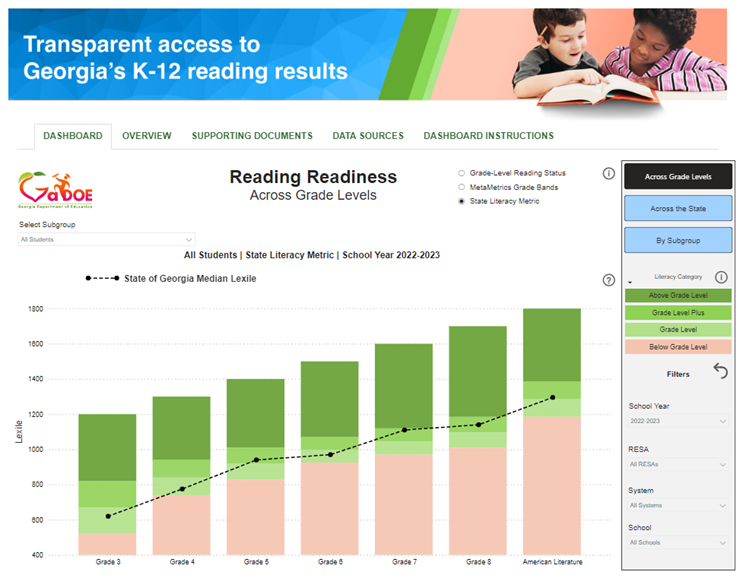The Georgia Department of Education has created a Reading Readiness Dashboard to allow easy, transparent access to literacy data at the state, district, and school levels, State School Superintendent Richard Woods announced today. The dashboard will ultimately support the efforts of educators, communities, and the state to increase the percentage of students reading on grade level.
Through the Reading Readiness Dashboard, Georgians will be able to easily access information on the percentage of students reading below, on, and above grade level for every school, district, and Regional Educational Service Agency (RESA) region in the state. The tool, which is designed to be both user-friendly and information-rich, also allows users to sort by student subgroups or directly compare school, district, or regional data with state averages.
“Our aim is to provide unparalleled public access to literacy results,” Superintendent Woods said.“We are committed to ensuring every student in Georgia can learn to read, and ultimately read to learn – and that goal is only furthered by the greater transparency and accountability around our results offered by the Reading Readiness Dashboard. The dashboard provides a common source of information on our progress as we join together to improve literacy outcomes for every child.”
The Reading Readiness Dashboard will provide information on the percentage of students reading below, on, and above grade level along with the more detailed State Literacy Metric that sorts performance into Below Grade Level, Grade Level, Grade Level Plus, and Above Grade Level. Users can also filter the data by grade level and student subgroups – including gender, race/ethnicity, students with disabilities, English Learners, and migrant students.
All data is drawn from the Georgia Milestones Reading Status indicator, which is based on the Lexile scores associated with students’ performance on a subset of questions on the English Language Arts (ELA) assessment.
